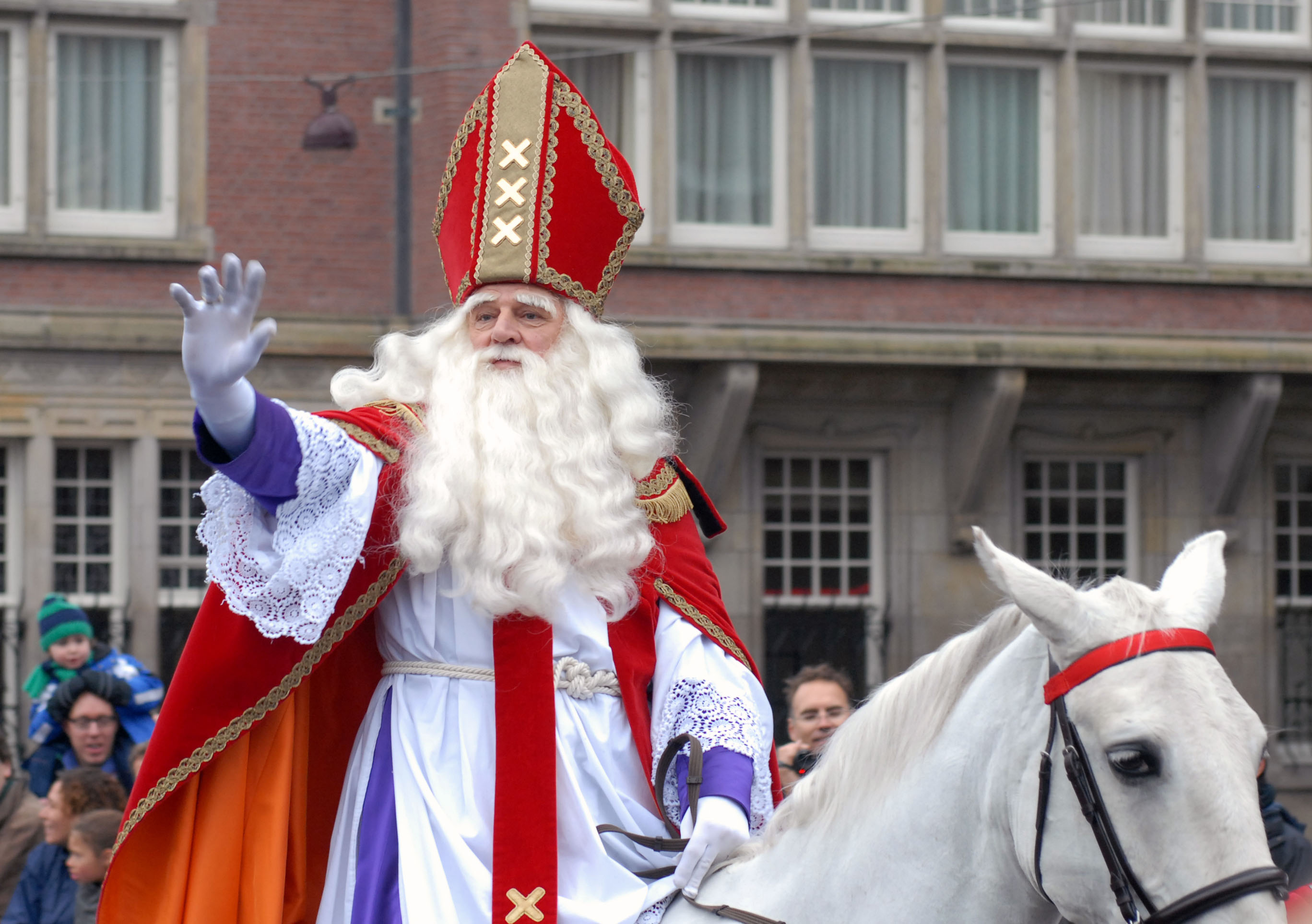Santa Claus is a legendary old man who brings gifts to children at Christmas. He has long been portrayed as a stout, bearded man in a red, fur-trimmed suit. The legend of Santa Claus is popular mainly in the United States.

The idea of Santa Claus developed from stories about a real person named Saint Nicholas. Historians know little for certain about him. According to tradition, he was born in Patara, a city in Lycia, an ancient region on the southwestern Mediterranean coast of what is now Turkey. When he was 19 years old, Nicholas became a priest. He later served as bishop of Myra, near Patara. He died during the A.D. 300’s.
According to legend, Saint Nicholas once aided a poor nobleman who had three daughters. No men would marry the daughters because the nobleman did not provide any of them with a dowry. A dowry is money or property that the bride’s family gives the bride or the groom or his family when the couple marry. Saint Nicholas threw three bags of money through an open window of the nobleman’s house to show that the daughters now had dowries. As a result, they were able to marry. The legend of Saint Nicholas as a man who brings gifts may have developed from this story.
How the Santa Claus legend began.
The custom of giving gifts on a special day in winter was practiced before Christianity was founded. After Christianity was well established, Saint Nicholas became a symbol of the custom among Christians. During the Reformation of the 1500’s, Protestants substituted nonreligious characters for Saint Nicholas. In England, for example, the saint was replaced by a gentleman called Father Christmas. This character was called Pere Noel in France and Weihnachtsmann in Germany.
The people of the Netherlands were especially fond of Saint Nicholas. The first Dutch settlers who came to America had a figure of Saint Nicholas on the front of their ship. The Dutch settlers maintained their custom of celebrating the saint’s feast day on December 6. They told their children that the saint visited their homes and left gifts on Saint Nicholas Eve. In time, English settlers adopted the legends and festivities associated with Saint Nicholas. English-speaking children spoke the Dutch name for the saint, Sinterklaas, quickly and excitedly so that it sounded like Santy Claus or Santa Claus.

Santa’s appearance.
Until the 1800’s, people pictured Saint Nicholas as a tall, thin, stately man who wore a bishop’s robe and rode a white horse. In 1809, the American author Washington Irving wrote Knickerbocker’s History of New York, in which he presented a new version of the saint. Irving described Saint Nicholas as a stout, jolly man who wore a broad-brimmed hat and huge breeches and smoked a long pipe. Irving’s Saint Nicholas rode over treetops in a wagon and filled children’s stockings with presents.
On Dec. 23, 1823, a poem titled “An Account of a Visit from St. Nicholas” appeared in the Troy (New York) Sentinel. This poem begins with the familiar line ” ‘Twas the night before Christmas.” Clement Clarke Moore, an American scholar, is generally credited with writing the poem, but Henry Livingston, an American land surveyor, may have written it. In the poem, Saint Nicholas appears as a stout, jolly man with twinkling eyes and a red nose. He wears a suit trimmed with white fur and rides a sleigh pulled by eight reindeer. The saint’s visit takes place on Christmas Eve. See Moore, Clement Clarke .
Thomas Nast, an American cartoonist, completed the present-day image of Santa Claus. Nast created a series of drawings for Harper’s Weekly magazine between 1863 and 1886. These drawings represent Santa Claus with a white beard. In various cartoons, Santa is shown working in his shop, driving a sleigh pulled by reindeer, or placing toys in stockings hung over a fireplace.
Santa-like characters in other countries.
Today, people in many parts of the world are familiar with the legend of Santa Claus. But he is primarily an American tradition. People in most countries have adopted other imaginary characters who supposedly bring gifts on a certain day of the year other than Christmas.
In the Netherlands and Belgium, Saint Nicholas visits homes on St. Nicholas Eve, December 5. He leaves small gifts in shoes that the children put near the fireplace, to be opened on St. Nicholas Day, December 6. He often is accompanied on these visits by a character named Black Pete, who carries a birch rod to whip naughty children. People in Austria, Hungary, and parts of Germany also celebrate St. Nicholas Day.
In southern Germany, people usually say the Christkind (Christ child) sends the gifts on Christmas Eve. But in northern Germany, most people say the Weihnachtsmann (Christmas Man) brings the presents. From the name Christkind came the character Kris Kringle, who gradually became identified with Santa Claus. In France, Pere Noel leaves small presents in homes on Christmas Eve. In Sweden, the Jultomten, an elflike character, brings gifts on Christmas Eve. This elf is called Julenissen in Denmark and Norway.
